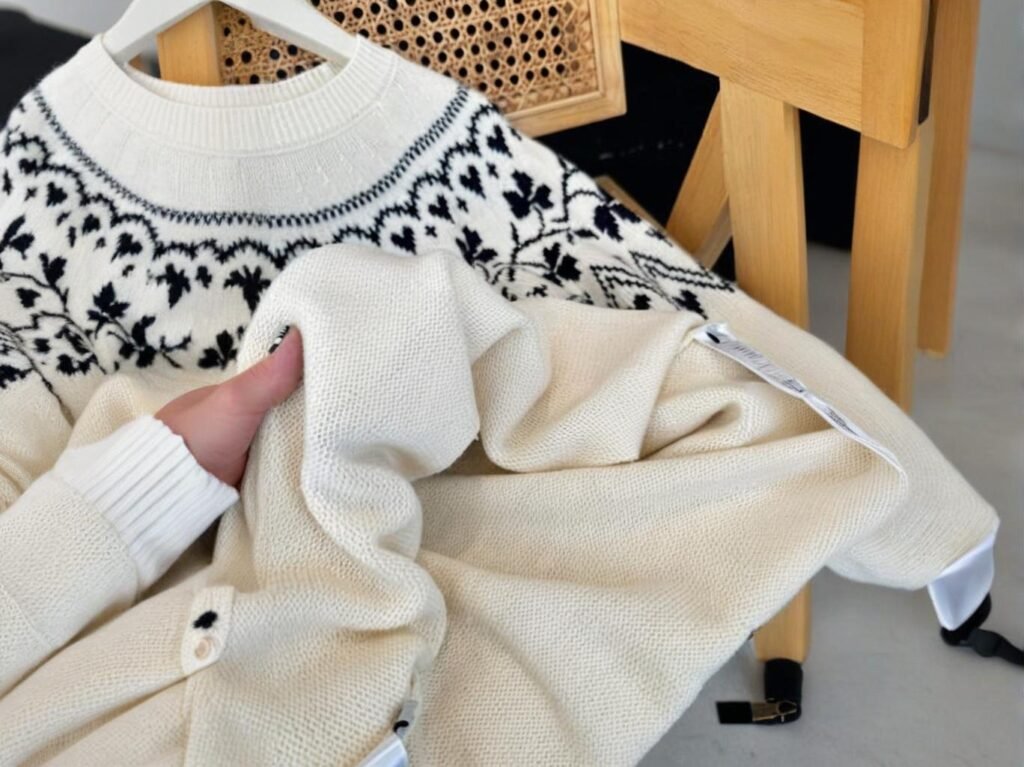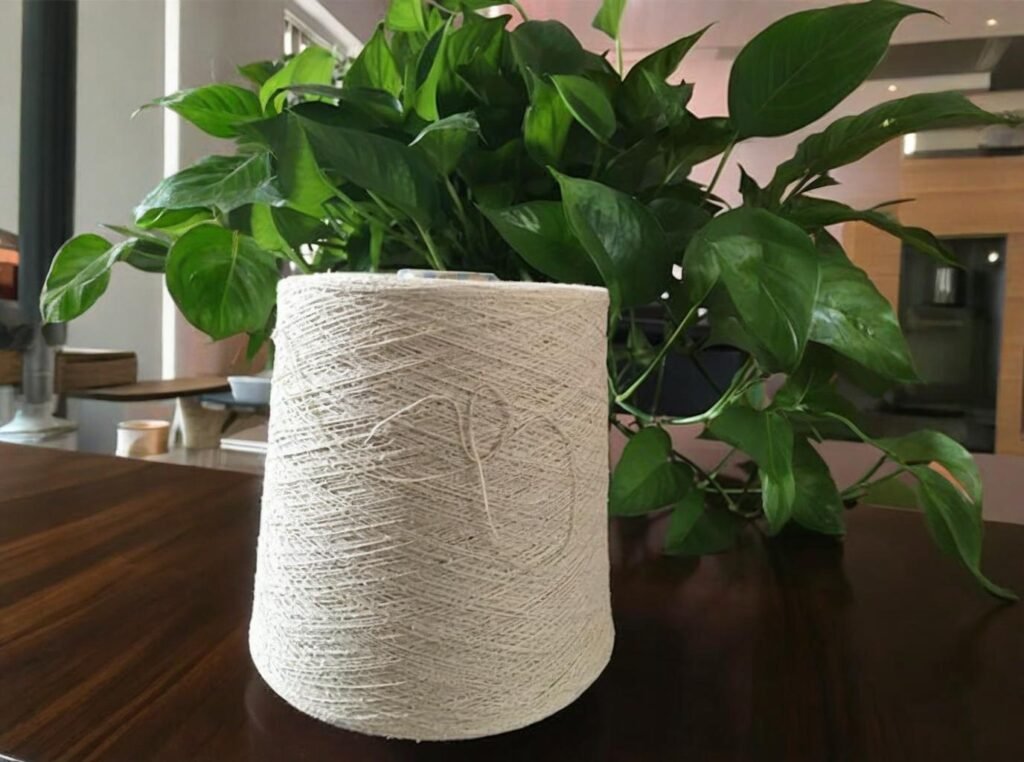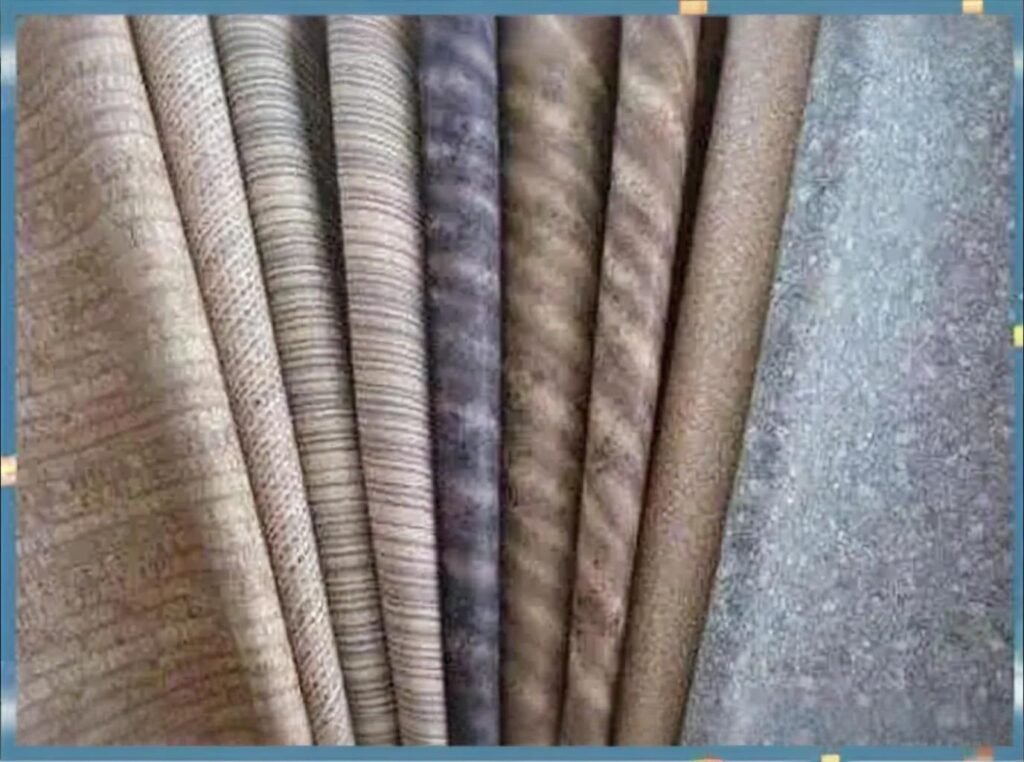When it comes to launching a private label textile line or fulfilling OEM orders in bulk, fabric selection is far more than a stylistic choice—it’s a make-or-break decision that defines product quality, brand identity, durability, compliance, and customer satisfaction. Among the many textile options available, acrylic fabric has emerged as a cost-effective, performance-friendly solution—especially for outerwear, cold-weather gear, fashion-forward layering pieces, and home textiles. To choose the right acrylic fabric for OEM and private label production, you must assess fiber type, fabric weight (GSM), blend compatibility, UV resistance, colorfastness, certification standards, and your supplier’s customization capabilities. It’s not just about fabric—it’s about selecting the right acrylic composition that aligns with your end-product’s function, compliance needs, and brand goals.
Let’s illustrate this with a real-world scenario: A Canadian startup in home decor launched a line of minimalist acrylic throws in collaboration with a Chinese OEM factory. They chose brushed 100% acrylic at 320 GSM, OEKO-TEX® certified, with Pantone-matched dyeing. Their MOQ was just 200 pieces, and the first batch sold out in 10 days. The kicker? Their return rate was under 1%, and customer reviews praised “softness, color brilliance, and warmth.” That success wasn’t random—it was the result of strategic fabric selection. Let’s walk through how you can do the same.
What Are the Different Types of Acrylic Fabric Available for OEM Use?

There are several types of acrylic fabrics used in OEM manufacturing, including 100% acrylic, brushed acrylic, modacrylic, and acrylic blends. Each type offers different characteristics in texture, insulation, flame resistance, and cost. Your choice should depend on end-use function—e.g., fashion, home goods, technical outerwear, or high-visibility clothing.
Common Acrylic Fabric Types
| Fabric Type | Composition | Texture | Ideal Application |
|---|---|---|---|
| 100% Acrylic | Pure acrylic | Wool-like | Sweaters, scarves, home textiles |
| Brushed Acrylic | Raised surface | Fuzzy, soft | Blankets, throws, winter wear |
| Modacrylic | Acrylic + modifiers | Smooth, flame-resistant | Workwear, PPE, military gear |
| Acrylic Blends | Acrylic + Cotton/Poly | Varies | Everyday apparel, uniforms, mixed uses |
Modacrylic is particularly valuable for OEM clients in safety sectors because of its inherent flame-retardant qualities, unlike basic acrylic.
Functional Comparison Table
| Property | 100% Acrylic | Modacrylic | Acrylic Blend | Brushed Acrylic |
|---|---|---|---|---|
| Softness | ★★★☆☆ | ★★★☆☆ | ★★★★☆ | ★★★★★ |
| Flame Resistance | ★☆☆☆☆ | ★★★★★ | ★★☆☆☆ | ★☆☆☆☆ |
| Warmth/Insulation | ★★★★☆ | ★★★☆☆ | ★★★☆☆ | ★★★★★ |
| Dyeability | ★★★★★ | ★★★★☆ | ★★★★☆ | ★★★★☆ |
| Price (per yard USD) | \$2–\$3.5 | \$3.5–\$6 | \$2–\$4 | \$3–\$5 |
OEM Use Case Examples
- Fashion OEM clients often choose brushed acrylic for winter scarves and oversized cardigans due to softness and high-margin resale.
- Private label pet brands source modacrylic fabrics to produce flame-retardant pet beds.
- Home textile labels opt for 100% acrylic for lightweight yet warm blankets at low cost.
Critical Thinking Point
Acrylic can mimic premium materials like wool, but selecting the wrong version (e.g., rough yarn quality, wrong finishing) can damage your brand image. That’s why lab-tested swatches and test orders are non-negotiable for OEM success.
How Do Fabric Weight and GSM Affect Acrylic Textile Selection?
Fabric weight, measured in grams per square meter (GSM), is a critical metric that influences the look, feel, function, and durability of acrylic textiles. Higher GSM indicates denser, warmer, and more opaque fabric, ideal for outerwear or blankets, while lower GSM suits linings or light layering pieces.
Acrylic GSM Reference Chart
| GSM Range | Application Type | Characteristics |
|---|---|---|
| 100–180 | Lining, summer scarves | Lightweight, semi-sheer, breathable |
| 180–250 | Base layers, fashion tops | Medium density, versatile |
| 250–350 | Sweaters, throws, uniforms | Warm, soft, structured |
| 350–500+ | Blankets, coats, upholstery | Heavy-duty, insulating, premium feel |
SzoneierFabrics recommends 280–320 GSM for acrylic sweaters and 350+ for home decor OEM clients.
Why GSM Impacts OEM Production Cost
| GSM Level | Dye Absorption | Fabric Consumption per Unit | Shipping Weight | Cost Impact |
|---|---|---|---|---|
| Low | Faster | Less | Lighter | Low |
| Medium | Moderate | Standard | Moderate | Mid |
| High | Slower | More | Heavier | Higher |
For a client in Denmark producing 5,000 acrylic throw blankets at 420 GSM, shipping costs were 24% higher than a 320 GSM order—but customer retention rose 17% due to perceived quality.
Fabric Weight vs. Perceived Value
Heavier GSM often correlates with a more “luxury” product in the eyes of consumers. For private label brands trying to position themselves as high-end, investing in 300+ GSM acrylic could yield higher perceived brand equity—even if COGS is slightly higher.
Which Acrylic Blends Work Best for Durability and Comfort?

The most effective acrylic blends for OEM and private label production balance softness, elasticity, and durability. Acrylic-polyester and acrylic-spandex blends are ideal for comfort and performance, while acrylic-cotton offers breathability with a natural feel. The right blend depends on your use case—apparel, workwear, upholstery, or accessories.
Top Acrylic Fabric Blends and Their Strengths
| Blend Type | Key Benefits | Ideal For |
|---|---|---|
| Acrylic + Polyester (50/50) | Durability, wrinkle resistance, affordability | Workwear, school uniforms |
| Acrylic + Spandex (95/5 or 90/10) | Stretch, flexibility, comfort | Leggings, fitted sweaters |
| Acrylic + Cotton (60/40 or 70/30) | Breathability, softness, easy-care | T-shirts, loungewear, babywear |
| Acrylic + Wool (Blend ratios vary) | Warmth, premium texture, insulation | High-end sweaters, scarves |
A 2023 sourcing study by the Korean Fashion Institute found that acrylic/polyester blends achieved 15% longer garment lifespan in high-wear sectors compared to cotton-rich blends.
Comfort and Wearability Ratings by Blend
| Fabric Blend | Softness (1–5) | Stretch (1–5) | Durability (1–5) | Wrinkle Resistance |
|---|---|---|---|---|
| Acrylic/Polyester | 4 | 3 | 5 | High |
| Acrylic/Spandex | 5 | 5 | 4 | Medium |
| Acrylic/Cotton | 4 | 3 | 3 | Low |
| Acrylic/Wool | 5 | 2 | 4 | Medium |
OEM Decision Matrix: Comfort vs Performance
If your product requires high durability and easy care (e.g., hospitality uniforms), go for acrylic/polyester. If your target market is focused on comfort, fit, and movement (e.g., yoga apparel), choose acrylic/spandex. For private label brands wanting a natural feel, acrylic/cotton offers a soft hand but requires better quality control during washing tests.
Case Example: Japanese Yoga Brand
A Tokyo-based startup opted for a 92% acrylic / 8% spandex blend for a limited-edition winter yoga line. Customer reviews emphasized “buttery softness with just enough stretch,” and return rates dropped by 22% versus their previous 100% cotton line.
How Important Is Colorfastness and UV Resistance in Acrylic Fabrics?
Colorfastness and UV resistance are critical when acrylic fabrics are used in outdoor applications, vibrant fashion, or home goods. Acrylic naturally holds dye well and resists sun fading better than most synthetic fibers, making it an excellent option for colorful, long-lasting textiles—especially for brands prioritizing consistent color across production runs.
Colorfastness Scores in Common Fabrics
| Fabric Type | Colorfastness (ISO Gray Scale 1–5) | UV Resistance (500 hrs exposure) |
|---|---|---|
| Acrylic | 4.5–5 | 88–90% color retention |
| Cotton | 3.5–4 | 60–65% color retention |
| Polyester | 4–4.5 | 75–80% color retention |
| Nylon | 4 | 70–75% color retention |
Source: SGS Lab, 2024. Testing conducted with ISO 105-B02 (UV) and ISO 105-C06 (wash fastness).
Why It Matters in OEM Production
- Private label brands often scale color stories across collections. Acrylic’s dye retention ensures consistency batch-to-batch.
- Outdoor furniture manufacturers rely on UV resistance to maintain aesthetic integrity for at least 2–3 years.
- High-visibility garments require lasting vibrancy to meet regulatory and branding requirements.
Testing Standards to Look For
| Test Standard | Description |
|---|---|
| ISO 105-B02 | Colorfastness to artificial light (UV) |
| ISO 105-C06 | Colorfastness to washing |
| AATCC TM16 | Lightfastness for textiles |
Ask suppliers for test reports or conduct pre-shipment 3rd party testing—especially for large OEM contracts.
Use Case: Outdoor Cushion Manufacturer (Spain)
A private label home brand sourced 100% solution-dyed acrylic fabric from SzoneierFabrics for a beach-side resort chain. After 9 months of intense sun exposure, cushions retained 87% of their original color. Customer feedback mentioned the “vibrant aesthetic even after a full season of use.”
What Certifications and Compliance Standards Should You Check Before Sourcing?

Before sourcing acrylic fabric for OEM or private label production, it’s essential to confirm that the material meets relevant safety, environmental, and chemical compliance standards. Key certifications include OEKO-TEX® Standard 100, REACH (EU), Prop 65 (USA), and any country-specific flammability or textile regulations.
Key Fabric Certifications to Look For
| Certification | Region | What It Ensures | Acrylic Relevance |
|---|---|---|---|
| OEKO-TEX® Standard 100 | Global | Free from harmful substances | Skin safety, eco-marketing |
| REACH | EU | No banned chemicals during production | Required for EU import |
| Prop 65 | California | Warning for known toxic substances | For US markets |
| EN ISO 11612 | Europe | Flame-resistant performance for protective clothing | Needed if modacrylic used |
| ASTM D1230 | USA | Flammability for general textiles | General apparel compliance |
If your acrylic product is going into direct-to-skin use (e.g., blankets, apparel), OEKO-TEX® is especially critical for both compliance and consumer trust.
Regulatory Scenario by Use Case
| Product Type | Certification Needed | Why It Matters |
|---|---|---|
| Babywear | OEKO-TEX®, CPSIA (USA) | Ensures chemical and safety compliance |
| Workwear (FR) | EN ISO 11612, ASTM D6413 | Needed for safety and insurance claims |
| Home Textiles (EU) | REACH | Ensures market access and safety |
| General Apparel (Global) | OEKO-TEX®, Prop 65, ISO 105 Series | For skin safety and wash fastness |
Third-Party Testing Partners to Work With
- SGS – Global lab with textile specialization
- Intertek – Excellent for REACH and US-based testing
- Bureau Veritas – Great for flammability and apparel regulations
SzoneierFabrics regularly partners with Intertek and SGS to conduct batch-based testing on request for OEM clients.
Compliance Mistake to Avoid
One major mistake small private label brands make is skipping pre-shipment lab testing, assuming the supplier’s word is enough. In reality, random testing per batch—even a simple colorfastness or pH test—can help prevent huge returns, safety complaints, or customs clearance delays.
How Can You Customize Acrylic Fabrics for Your Private Label Brand?
Acrylic fabrics offer extensive customization opportunities in color, texture, blend ratio, surface treatment, and even branding integration (e.g., woven logos). OEM and private label brands can tailor these options for product differentiation, functional upgrades, and alignment with their design language.
Customization Options for Acrylic Fabric
| Customization Area | Available Options | Example Use |
|---|---|---|
| Color | Pantone matching, tie-dye, digital printing | Brand-specific product palettes |
| GSM & Thickness | 100–500+ GSM | Lightweight vs premium feel |
| Blending Ratio | Custom % of polyester, cotton, spandex | Functional fit or feel goals |
| Surface Finish | Brushed, anti-pilling, waterproof coating | Throws, outdoor gear, uniforms |
| Texture Treatments | Ribbed, fleece-like, flat knit | Home textiles, sportswear |
| Flame Retardancy | Chemical coating or modacrylic blend | Workwear, outdoor furniture |
| Branding Integration | Jacquard weave logos, embedded labels | Private label identity |
Real Example: Branded Sweater Line
A UK-based ethical fashion brand worked with SzoneierFabrics to create an eco-soft 320 GSM brushed acrylic/poly blend with a custom cream tone (Pantone 7527 C), finished with an anti-pilling surface. They embedded their woven brand label directly into the hem seam during knitting. Result: a fully ownable, cozy winter essential that retailed at 5× manufacturing cost.
The Role of MOQ in Customization
Most acrylic fabric mills offer:
- Solid color options with MOQ starting at 300–500 meters
- Custom blends and finishes starting at 1,000 meters
- Digital printing: 100 meters (varies by print width and complexity)
SzoneierFabrics supports low MOQ development from 50 meters for standard color stock items and offers free lab dips to approve before scaling to bulk.
Pre-Production Checklist for Custom Acrylic Orders
| Step | Purpose |
|---|---|
| Swatch sampling | Evaluate texture, color, GSM |
| Lab dip approval | Confirm final color match |
| Sample garment production | Test drape, feel, durability |
| Certification request | Ensure export readiness |
| Bulk PO with lead time plan | Secure capacity & minimize delays |
Many private label clients save time and cost by developing “core base fabric libraries” with 2–3 pre-approved acrylic types and customizing only color or finish.
What MOQ and Sampling Strategies Help Reduce OEM Fabric Sourcing Risk?

To reduce sourcing risk in OEM production, buyers should prioritize low-MOQ suppliers with flexible sampling policies, pre-production approvals, and scalable production capacity. Sampling strategies—such as swatch testing, lab dips, and pre-production runs—are essential to ensuring the fabric meets expectations before full-scale manufacturing begins.
Why MOQ Matters in OEM and Private Label Projects
| Business Stage | Ideal MOQ Range | Reason |
|---|---|---|
| New brand launch | 50–300 meters | Limits upfront investment |
| Pilot run or test batch | 100–500 meters | Market testing without overstocking |
| Scaling up production | 1,000–5,000 meters | Benefit from price breaks |
| Seasonal collections | 300–1,000 meters | Moderate volumes with color changes |
SzoneierFabrics supports OEM clients with MOQ starting at just 50 meters, helping emerging brands or small businesses enter the market confidently.
Smart Sampling Workflow
| Sampling Stage | Purpose | Lead Time (Est.) |
|---|---|---|
| Swatch book request | Evaluate texture and weave | 2–5 days |
| Lab dip sample | Approve exact color before dyeing | 5–7 days |
| Physical sample/yardage | Test actual feel, printing, or drape | 7–10 days |
| Pre-production sample | Ensure construction and labeling | 10–15 days |
Skipping lab dips is one of the most common mistakes that leads to color mismatches in final production.
Sampling Tips for OEM Buyers
- Always request a sample in final GSM—as drape and hand-feel vary by weight.
- Ask for batch testing results (colorfastness, pH, shrinkage) if you’re ordering from a new supplier.
- Avoid committing to a large PO until pre-production approval is completed.
Case Study: Minimizing Waste
A French private label outerwear brand used SzoneierFabrics’ sampling tier system. By testing 5 variations across color and GSM over three weeks, they avoided ordering 1,200 meters of an overly heavy acrylic blend—saving €4,600 in potential losses.
How Do You Compare Global Acrylic Fabric Suppliers for Long-Term Success?
Comparing acrylic fabric suppliers requires evaluating not just price, but also reliability, production capacity, customization capability, lead time, certifications, and responsiveness. Long-term success comes from building a relationship with a supplier who understands your brand goals, offers flexible support, and can scale with your growth.
Key Factors to Compare Among Suppliers
| Evaluation Criteria | Questions to Ask |
|---|---|
| Production Capability | What’s the monthly output? Can they meet your projected demand? |
| Customization Options | Can they handle your exact blend, finish, and color specs? |
| Certifications & Compliance | Do they have OEKO-TEX®, REACH, ISO? Can they offer test reports? |
| Sampling Support | What is the cost, lead time, and flexibility for sampling? |
| MOQ Flexibility | Can they start small and grow with you? |
| Communication | How quickly and clearly do they respond to technical requests? |
| Quality Control | Do they offer pre-shipment inspections or 3rd-party testing? |
Global vs China-Based Suppliers: Pros and Cons
| Supplier Type | Pros | Cons |
|---|---|---|
| Large Global Mills | High stability, certifications, mass scale | High MOQ, slower sampling, less customization |
| Niche Chinese Factories | Fast customization, low MOQ, flexible support | Requires vetting for reliability and certifications |
SzoneierFabrics combines the best of both: ISO & OEKO-TEX® certified, yet supports MOQ from 50 meters and free sample programs.
Build a Long-Term Sourcing Relationship
- Visit the factory if possible, or schedule video audits
- Start small with 1–2 core fabrics and scale up over time
- Keep documentation of color specs, GSM, test reports, and communications
- Align forecasted volumes with the supplier’s production calendar
Supplier Comparison Template (Editable)
| Supplier Name | MOQ | Custom Colors | Certifications | Sampling Cost | Lead Time | Notes |
|---|---|---|---|---|---|---|
| Supplier A | 1,000m | No | None | Paid | 25 days | |
| Supplier B | 300m | Yes | OEKO-TEX® | Free swatch | 15 days | |
| SzoneierFabrics | 50m | Yes | OEKO-TEX®, ISO | Free swatch & lab dip | 7–10 days | Flexible OEM & private label partner |
Make the Right Fabric Decision from the Start
Choosing the right acrylic fabric for OEM and private label production isn’t just a technical task—it’s a strategic move that defines your brand identity, product performance, and market reputation. From fiber types and GSM to customization and supplier reliability, each decision you make impacts your ability to scale profitably, deliver quality, and win loyal customers.
Whether you’re launching a new brand, testing a limited collection, or producing in bulk for retail, the right supplier partnership is your most powerful tool.
Looking for the Right Acrylic Fabric for Your Brand?
SzoneierFabrics specializes in custom acrylic fabric development for OEM and private label clients across fashion, home, and industrial sectors. We offer:
- ✔ Free swatches & lab dips
- ✔ Low MOQ from just 50 meters
- ✔ Fast sampling & production
- ✔ OEKO-TEX®, REACH, and ISO-certified options
- ✔ Tailored support for emerging and established brands

